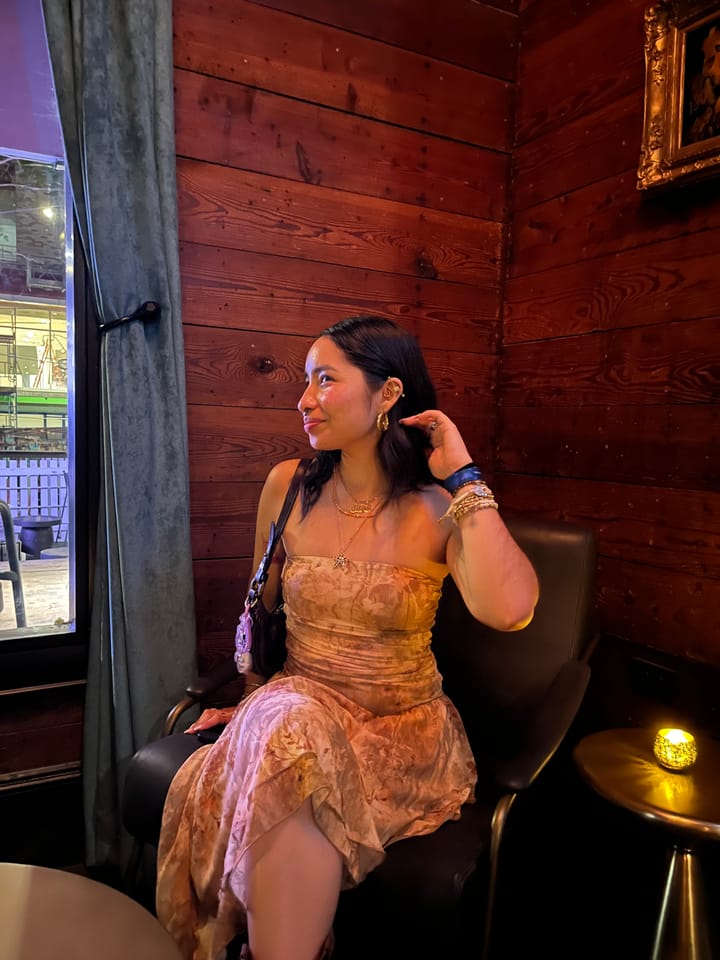The Duke's Notebook: Denk's Homage to Homes
“Is there a market for something like that?” asked an audience member of Carnegie Hall soloist Jeremy Denk, after having heard him play several piano études of the Hungarian-American composer György Ligeti (1923-2006) at a Seattle Chamber Music Festival concert this summer.
Whether or not there is a market for Ligeti’s chaotic and complicated piano études is quite complicated. On one hand, Denk’s concert featuring Ligeti and Beethoven did manage to fill most of the seats in Buckley Recital Hall last Friday evening. In fact, the concert management had to assign some unfortunate concert-goers, including myself, to the obscure stage-right balcony corner. The turnout of Amherst town people, as usual, significantly outnumbered that of Amherst students, who in fact do not have to pay for their seven-dollar ticket if they sign up for student rush one hour before the concert (in case they are still unaware).
On the other hand, did the market for something like Ligeti’s piano études actually ensure such a successful turnout? Debatable. Denk probably had a much better chance of keeping his audience in their seats by saving the Beethoven for after the Ligeti’s études.
This cunningly designed program, however, was otherwise ill-balanced and posed several logistical and technical challenges for Denk’s performance. He started with the extremely difficult and intense music of the Ligeti études, which lasted for more than 40 minutes without interruption — if one does not count the old Nokia cellphone that went off between the 10th and 11th études. After intermission, he followed up with Beethoven’s brisk 25-minute Sonata No.32 in C minor, which, virtuosic as it is, should have been rather relaxing. The Ligeti’s études required so many forceful bangs in numerous passages and such a full exploration of all the keys of the piano that Denk had to have the piano retuned during intermission before his escapade into the tonal world of Beethoven.
Denk himself admitted the technical challenges of playing the Beethoven’s two-movement sonata after the Ligeti, describing them as “different worlds.” Even disregarding the wrong note he hit at the down beat of the first bar, the first movement of Beethoven’s sonata could have presented a much more flavorful and saturated sound. The ghosts of Ligeti’s mechanical and chaotic études seemed to have wandered too far into the Beethoven.
The piano Denk played might partially explain the plain and sometimes even plastic sound in the Beethoven. This Steinway & Son grand piano has spent most of its career at Amherst waiting for touching fingers, and might need more time to get fully broken in. Thus, it will likely give a marvelous sound as the Music at Amherst series concludes with Angela Hewitt, who will play Bach and Couperin in April.
But Denk deserves credit for being determined to take the challenges and risks mentioned above. By playing Ligeti and Beethoven back to back, he offered the Buckley audience an interesting perspective on (and an analogue between) these two great composers and the works composed during the latter half of their careers.
The audience should feel lucky that Denk gave a pre-concert talk, even though he promised the reverse in his blog (read the full story in his latest entry over the summer). With a blackboard and some occasional demonstrative playing on the piano, Denk explained Ligeti’s compositional techniques and ideas from one étude to another with acuity, so that in the actual concert the audience could more fully comprehend his playing.
It was a notably conscious concert experience: the tonal dichotomies between the left and right hand in Galamb Borong, the crystal-like open fifths in Cordes à vide and Fém, the rhythmic game plays and intricacies in Touches bloquées and Entrelacs, the canons and fugues in Désordre and Automne à Varsovie and the wild scalar passages in Fanfares and Vertige, and powerful musical and non-musical symbolism in the thirteenth étude L’escalier du diable with which he chose to end the first half of the concert, omitting the 14 étude, the actual finale of Ligeti’s second book of piano études. His explanations and playing apparently made Ligeti’s otherwise difficult music fairly accessible for Buckley’s audience.
And when Beethoven’s sonata started to unfold, it gradually unearthed Denk’s plans for a program design flush with a deluge of inspiring ideas and moments of transcendence. The first movement of this very last sonata of Beethoven, unlike the rest of his oeuvre, does not spend much time on the workout in the development section but rather adheres to the originality of Beethoven’s ideas, the diminished chords and the diminished-fourth interval exposed in the very first bars. Ligeti, in the same way, turned his fairly pianistic études into compositional essays, where he freely explored one of the specific compositional ideas in each individual piece.
The second movement of Beethoven’s sonata was magical. A theme and variation, it starts with a beautiful 16-bar aria that dwells in the simplest harmonies one can find in C major. Then, it dives into a breathtaking adventure of rhythmic diminution and syncopation, kaleidoscopic but dwelling in the 16-bar theme all the same. Echoes from Ligeti do sneak into the soundscape, such as his polyrhythms, syncopations and his isorhythmic taleae, a technique from medieval composers such as Machaut and Dufay that uses the same rhythmic pattern or “talae” over and over again. Even more similar is Ligeti’s build-up in a piece like “Désordre” where he starts with a simple idea and then elevates it with rhythmic intricacies.
More profoundly, both Ligeti and Beethoven pose a musical question about home. In the Ligeti études, there are frequent attempts that seem to stretch the limits of the piano keyboard and various passages of constantly-escaping Shepard tones (a deceptive effect of an endless ascending or descending line achieved by stacking the same line over and over again). Are they suggesting Ligeti’s own life, in which he had to flee his home country after the Communist takeover and embark on an endless search for “home?” Or is it pointing to his futile search for a style he could firmly identify with? After settling in the home of C major with the most simple yet inescapable harmony, Beethoven takes us, under the transparent skyline of trills, to keys far and foreign. It’s as though the music is lost within, before he finally brings us back to the home-key with the theme — does he establish a “home” in his music, because he was forced into himself by his social isolation and physical deafness?
Do the two pieces also serve as part of the composers’ “farewells” as they are conjoined with musical infinity: one with the escaping Shepard tones that transcend the limits of space; the other with the endless cycles of simple harmony that transcend the limits of time?
Later this week, Denk will be recording the same program. It would be interesting to see if he can bring back the snippets of ideas and inspiration he gave in this concert, where he drew a parallel musical timeline in the higher dimensions and brought Ligeti and Beethoven together in a magically meaningful way.





Comments ()